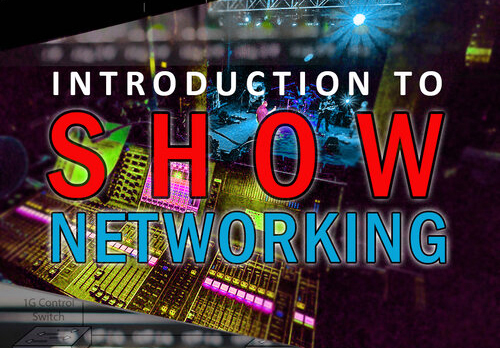In the live entertainment world, any technician wishing to go far should have, at the very least, a basic understanding of network terminology and functionality. During the pandemic where virtual shows are the norm, this is even more true. Enter “Introduction to Show Networking” by John Huntington.
“Introduction to Show Networking” is the follow-up to Huntington’s book “Control Systems for Live Entertainment,” or as he likes to call it, “the Big Book” due to the latest edition clocking in at over 400 pages. According to the author, to make “Introduction to Show Networking,” he took the three chapters out of his “Big Book” (now titled “Show Networks and Control Systems”) on networking, added a section on network system design, and reorganized and updated all the content. The result of this is a much smaller, more affordable, and focused volume for those who are just starting to build show networks.
Released in late 2020, “Introduction to Show Networking” covers the basics of how Ethernet-based networks are used to control and distribute media of all types for a range of applications. From theatre to cruise ships to houses of worship, each concept is presented in a “ground-up” format, with basic terminology, standards, and definitions outlined first, then expanding upon them and showing how these standards apply to successful network planning, building, and deployment.

The book is divided into five chapters, each covering a different aspect of networking. Chapter one serves as the introduction to what a network is, types of networks (WAN vs. LAN vs. Internet), networking concepts such as bandwidth, determinism, packet forwarding, and error detection, as well as the types of networks used in shows (lighting, sound, video, pyro networks, and more).
Chapter two delves into Ethernet, referred to as the “default digital highway system” (page 21), and the hardware that accompanies such networks. Other topics in this chapter include ethernet implementations, power over Ethernet (PoE), IEEE 802.11 Wi-Fi protocols, and why Ethernet is ideal for the live entertainment industry.
Chapter three examines network operations, covering topics like TCP and UDP protocols, IP addressing and subnets, IPv6 addressing, and why IP networking is ideal for the live entertainment industry. Chapter four goes into more in-depth network operations, with concepts like VLANs, traffic flow visualizations, and other network system protocols like Internet Group Management Protocols, Network Address Translations, Virtual Private Networks, and Link Layer Discovery Protocols. The discussion is capped off with a section on show networking best practices, which has been my most read section of the book.
Finally, chapter five contains examples of show control networks and lays out a step-by-step network design and implementation process.
In the interest of full transparency, I purchased a copy of this book as soon as it came out. Also, I’m not a network systems engineer. Most of my show network experience comes from learning on-site, watching other people set up networks, and copying them. Most of my training comes out of necessity. Audio, especially in theatre, has seen an explosion of Ethernet-based digital audio protocols over the past two decades. As a result, networking and system administration have become a requirement of the job for designers and audio engineers alike.
Because of this, “Introduction to Show Networking” is a perfect reference for those individuals who have practical knowledge of show networks and want to reinforce that knowledge with the concepts laid out in the book, or those individuals who wish to learn more about the basics of show networking, having never touched a network before. I highly recommend this book for anyone in high school or college who wants to learn or reinforce the basic networking concepts but does not need something as comprehensive or in-depth as “Control Systems for Live Entertainment.”
Introduction to Show Networking is available from John Huntington’s website (here), Rational Acoustics (here), Amazon (here) and Indiebound (here) for $25 (USD).















